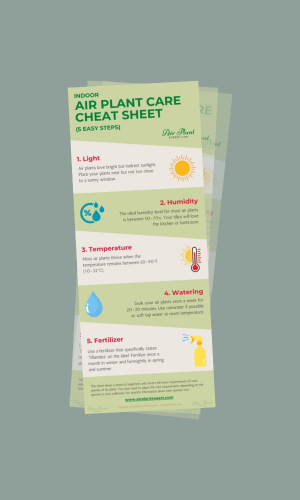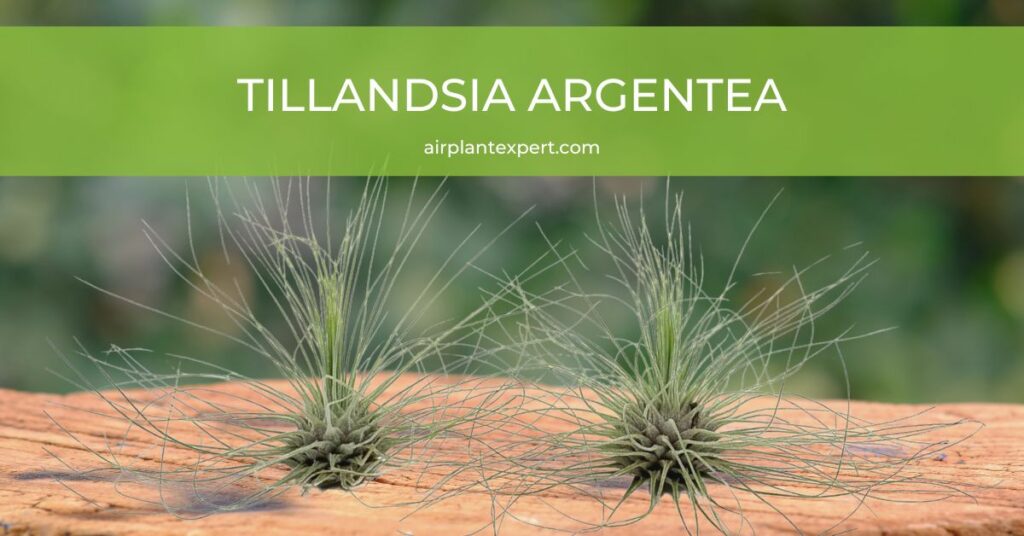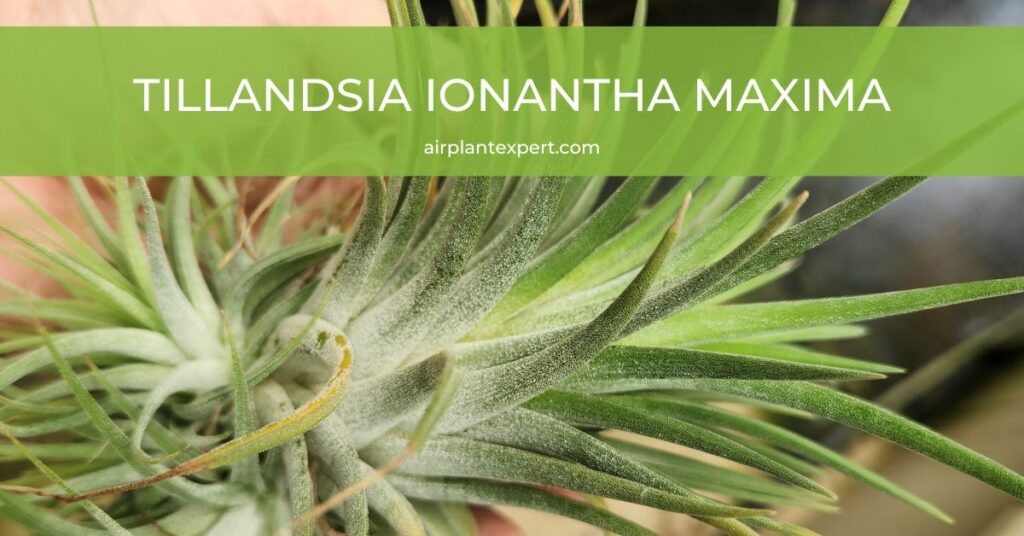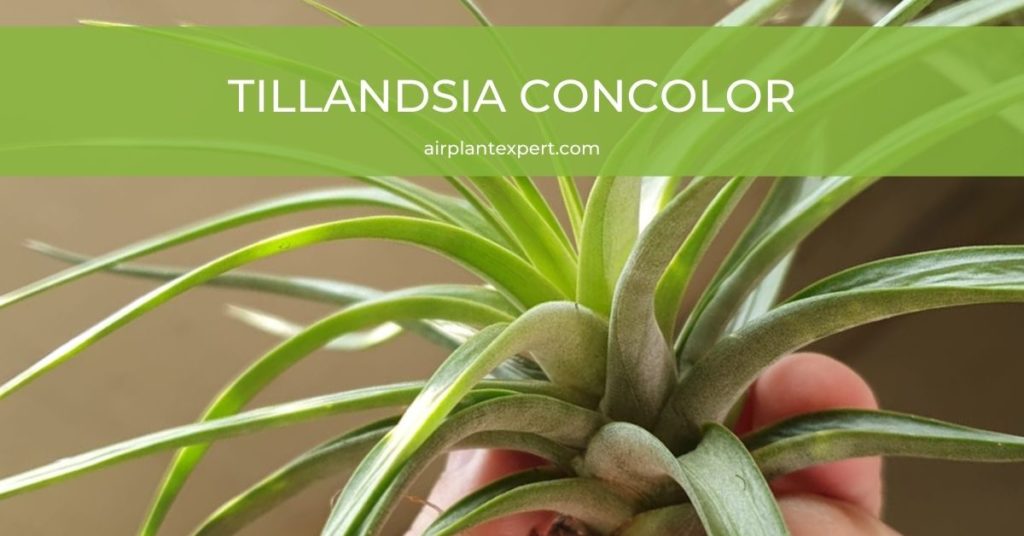Tillandsia Argentea has a somewhat unique appearance. Its striking silvery-green, thin leaves form an almost perfect rosette and add a touch of elegance to any space. Argentea is a notable air plant even when it’s not in flower.
Quick Guide
How to Care for Tillandsia Argentea
Tillandsia Argentea, commonly known as the “Silver-leaved air plant”, has wonderful silvery leaves that form a delightful rosette. The species is often said to resemble a sea urchin.
Argentea is relatively easy to grow. However, I’ve noticed this species is susceptible to over-fertilization. I recommend using a premixed Tillandsia-specific fertilizer as a safe bet rather than trying to mix your own solutions.
Argentea enjoys high humidity, however, proper air circulation is equally important to prevent rot around its base. I recommend soaking and misting this plant, otherwise you may find the leaf tips dry out and brown very quickly.
Due to its distinctive and delicate silvery foliage, Argentea makes an elegant display from hanging planters or decorative aluminum wire. You can also showcase this species in terrariums or glass orbs with other plants in a decorative arrangement.
How to Water Tillandsia Argentea
When watering Tillandsia Argentea, I recommend immersing the plant in water for 20-30 minutes, roughly once a week. This helps to hydrate your plant more thoroughly than misting.
After soaking, give the plant a good shake to remove the excess water. I like to water in the morning to give the plant enough time to dry out sufficiently during the day. Placing your plants in a well-ventilated area after watering can aid the drying process.
I also recommend misting this species 2-3 times a week because it loves higher humidity levels. When misting the leaves saturate the plant and cover every surface.
You can use soft tap water, however, rainwater is a better option if available. Aquarium, pond, and spring water are all good options as they contain natural minerals and nutrients.
Keep a close eye on the plant’s thin leaf tips. Dry browning leaf tips may indicate dehydration. It’s normal to see a few dried leaf tips on an air plant but if you notice the issue is spreading you’ll likely need to increase the frequency of watering.
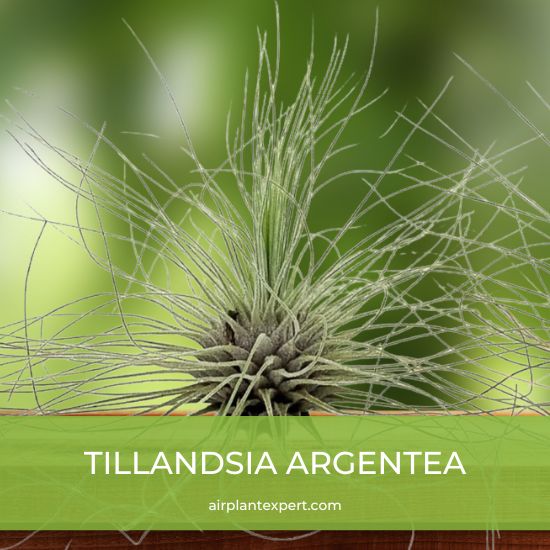
How to Propagate Tillandsia Argentea
Tillandsia Argentea can be propagated quite effectively using offsets, commonly termed “pups”. The pups are essentially clones of the parent plant.
After blooming, watch for the emergence of pups at the mother plant’s base. The pups usually start to grow once the blooming cycle is complete but may also appear before the flowers open.
Wait until the pups are about one-third the size of the mother plant before you attempt to separate them. If you remove the pups too soon you risk the chance of them not surviving on their own.
To remove a pup, gently grasp it near its base and twist it away from the parent plant. You can also use a sterile knife or pair of scissors for a clean cut if needed. Place the pup(s) in a location that mimics the parent plant’s environment, with proper airflow, indirect sunlight, and good humidity.
Water the newly propagated pups once a week and ensure they receive adequate but indirect sunlight. Patience is key as the pups develop their roots and leaves.
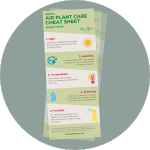
Get Your FREE Air Plant Care Cheat Sheet
5 easy steps to keep your air plants happy and healthy.
Flowers and Expert Tips
Tillandsia Argentea produces a tall, yet thin and slender inflorescence that emerges from the center of the plant’s rosette. The inflorescence can reach up to 7″ tall and often develops 3-7 tubular-like flowers.
The long flower spikes have wine-red floral bracts and the petals are typically a subtle crimson color. However, the flower petals can be lilac in color and there is even a yellow form flower.
Be careful not to confuse Argentea with Tillandsia Fuchsii or Tillandsia Filifolia. These filiform-leaved air plants share many characteristics. Of note, Filifolia has fern-green leaf blades whereas Fuchsii leaves have a hint of silvery blue.
As I mentioned above, Argentea can be susceptible to over-fertilization. Therefore, I recommend using a premixed Tillandsia-specific fertilizer for this sensitive species – mixing your own DIY fertilizer solutions can be a risky business.
Tillandsia Argentea Varieties and Hybrids
I was very surprised I could not find any examples of Argentea hybrids. This may be due to this species’ similarities to other filiform-leaved air plants that require less maintenance and therefore are easier to propagate.
I would love to hear from anyone who has successfully managed to create an Argentea hybrid, do reach out.
I haven’t observed this species in its native habitat so I am not familiar with all the different colorations of flowers that some botanists have identified – perhaps one day a new variety will be discovered.

